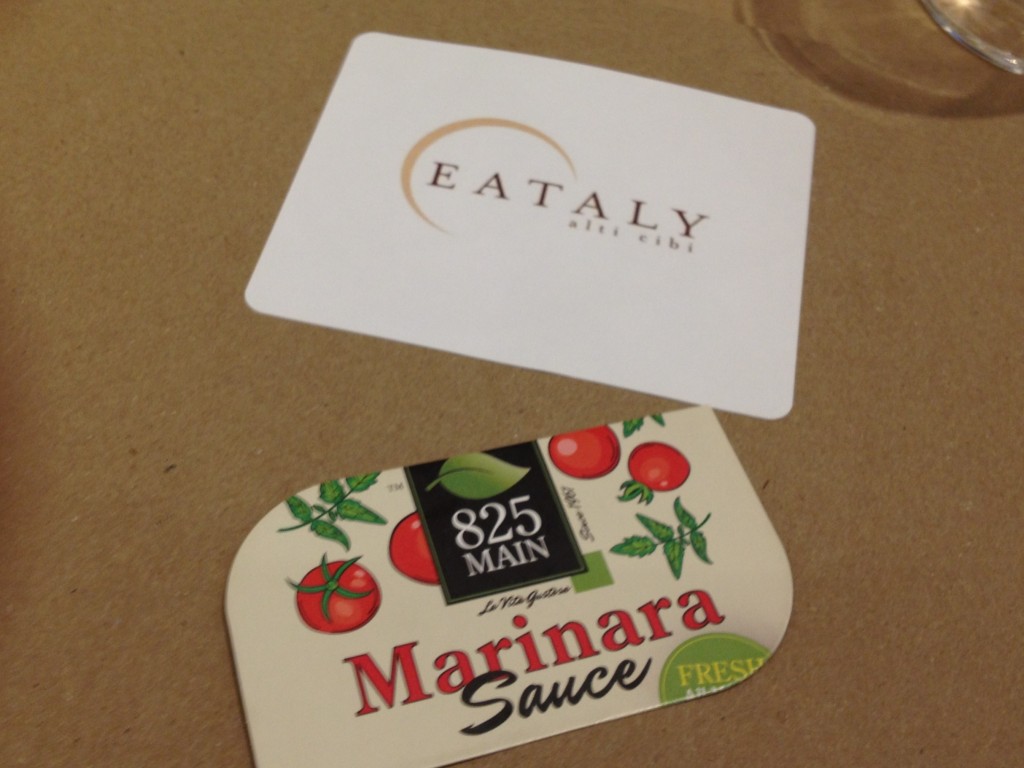 825 MAIN Marinara is learning so much from Eataly about olive oils!
825 MAIN Marinara is learning so much from Eataly about olive oils!
I have been on a quest to learn more about the olive oil that I put in the 825 MAIN Marinara. I know what I like and what I don’t like. I needed to find out why so as to know what to use in my product. I have been on a whirlwind of tasting olive oils. I must have tasted about 30 so far from all different regions even ones from Texas. All this tasting that I have done didn’t give me the answer I was looking for. What makes a good olive oil? So I signed my husband and I for a class at La Scuola di Eataly where Lydia Bastianich is the dean. We were both going to get a better understanding of the world of olive oil.

So we arrived to the Flatiron district of NYC to find Eataly. The beautiful Flatiron building points us to Eataly. The Flatiron was built in 1909 and was once the tallest building in NY designed by Chicago’s Daniel Burnham as a vertical Renaissance palazzo with Beaux-Arts styling. In 2009 an Italian real estate company from Rome bought the building. Hmm…how apropos!
The first Eataly originated in Turin, Italy in 2007 and became a fast growing chain. Eataly in NYC is the largest artisanal Italian food and wine marketplace in the world. Mario Batali partnered up with Lydia and Joe Bastianich to open up this extraordinary marketplace. It was so busy when we got there on a Saturday. It was overwhelming and so exciting to be amongst all this wonderful food. It was like a condensed outdoor market you would find in any Italian city. At this point I think there was more people jam packed in here than all of Italy.
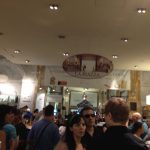
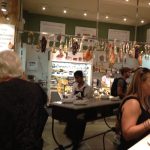
When were finally pointed to La Scuola we were pleasantly surprised to see perfectly placed desks in a beautiful kitchen. All the desks were set with brown paper placemats with Eataly stamped glasses and a big basket of artisanal Italian bread. My husband and I were in heaven. It was going to be a very pleasant adventure with our instructors, Nicholas Coleman and Chef Dave Pasternack.

I am going to give you a super condensed version of what we learned. My husband and I considered ourselves somewhat knowledgeable on olive oils. We found out we don’t know anything! I have listed some of what we learned.

1. The only olive oil one should buy is extra virgin olive oil. Anything that uses any other word before olive oil is substandard. Also there is no use in buying organic olive oil. It is one of the least pesticide ridden fruit.
2. An olive oil in clear glass or plastic is a big no no!! The taste of plastic compromises the olive oil. Clear glass speeds up the spoilage of the olive oil. Good olive oil containers are dark glass or tin containers. Although some good olive oils are packaged in clear glass to market to the Americans. Americans like to see what they buy. Ugh! Let’s boycott clear glass olive oils! Spread the word! We Americans are educated and know what’s best. Well now I do after this class!
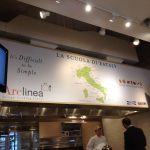
3. Don’t buy olive oils where the label reads “Product of Italy” with no mention of the Olive cultivator or a region specified.
4. Olive oil is regarded as fresh fruit juice. And is to be treated as such. It spoils. It does not age as fine wine. No wonder as much as I search for that olive oil taste that I experienced in Italy, I haven’t been able to find it here on the east coast of America. What I was tasting was fresh squeezed olive oil. The fresher the oil the greener it is. And I will never find it unless I go to Puglia and drink from a spout of freshly milled Olive oil!
5. When our recipes call for extra virgin olive oil it is a generic term. In reality olive oil varies from country to country, region to region, even year to year from the same olive grove. Even the way the olives are harvested is important to the taste. The best olive oils are hand harvested and thus very expensive. I figured out that taste that I absolutely can’t stand in certain olive oils. I thought it may be the type of olive or the region. I learned what that taste is. The cheaper olive oils are harvested by machines so even the over ripe and rotten olives are gathered. So the quantity and speed of the olives harvested affects the taste and the price of the olive oils.

6. So one of the most interesting thing that we learned was the peppery taste in olive oils. When you taste the olive oil straight from the bottle (which is a ritual in our family with a fresh loaf of Italian bread) that peppery taste that is evident in better olive oils. We thought it tasted hot and sometimes it catches in the back of your throat and makes you cough. Well the more peppery taste you get the higher the antioxidants.
7. Even the pits are crushed when making olive oil!
8. Lastly, there are different uses for extra virgin olive oils. The milder ones are used for delicate foods like fish while the robust ones are used for tomato sauces.
9. I almost forgot. One little bit of trivia he shared. Truffle olive oil is a scam. It is synthetic truffle flavor. Truffles have water in them and water and oil don’t mix.
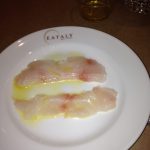
So all in all we enjoyed ourselves immensely. While we educated our brains our palates were getting pampered! Sorry for so few food pictures after the first course I just dug in without taking pictures! It was a delicious learning session! We learned how to warm the olive oil cupping the cup in between our palms. The tasting part kind of reminded me of camels. Haha! We had to slurp the olive oil in our mouths and then like a reverse spit spraying the inside of our mouth so every taste bud could be coated! It was quite funny! I had to really contain myself without bursting out in laughter! Thanks to Nicholas and Chef Dave we tasted 4 different varieties of olive from 4 different olives from 3 regions of Italy. They were so buttery and luscious! The difference between the robust olive oils and the mellow ones was the grassy taste. And some were more peppery than others. Going to Lydia Bastianich’s La Scuola di Eatlay was a great adventure!

